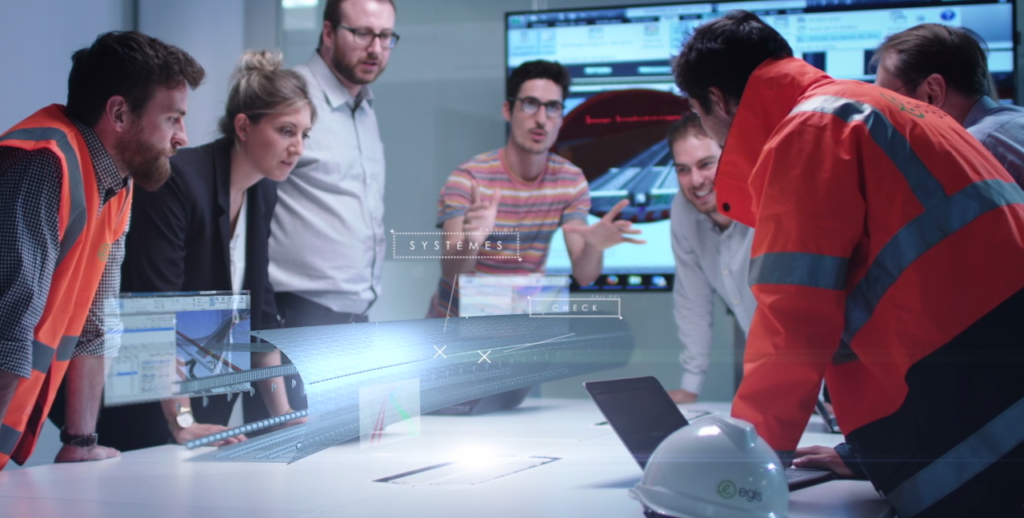
The Architecture, Engineering, and Construction (AEC) industry is undergoing significant transformation due to advancements in technology. This shift is reshaping how projects are executed, with a notable impact on outsourcing practices within the industry. Outsourcing in the AEC sector involves delegating various design, engineering, and construction services to external firms, often located in different countries. With the integration of modern technology, the AEC outsourcing today has become more efficient, accurate, and globally integrated, enabling companies to achieve higher productivity, cost-effectiveness, and innovation.
The Evolution of AEC Outsourcing
AEC outsourcing has evolved from a simple cost-saving strategy to a sophisticated practice fueled by digital transformation. Historically, outsourcing in the AEC sector was limited to routine tasks like drafting, 3D modeling, or structural analysis. However, the advent of advanced software, cloud computing, and artificial intelligence (AI) has expanded the range of services that can be outsourced, making it possible to delegate more complex and specialized tasks.
Key Technologies Shaping AEC Outsourcing
Technology is the cornerstone of modern AEC outsourcing, and several innovations have had a transformative effect on how outsourcing is conducted in the industry. Here’s a look at some of the most influential technologies driving this change:
1. Building Information Modeling (BIM)
BIM is a process that involves creating and managing digital representations of physical and functional characteristics of buildings. It has become essential to AEC outsourcing because it provides a shared knowledge resource that can be used throughout the project lifecycle. BIM enables outsourced teams to work collaboratively with in-house teams, ensuring that everyone is working from the same set of data.
Through BIM, firms can outsource complex tasks such as architectural design, structural analysis, and MEP system modeling. Additionally, BIM helps identify potential conflicts between different building systems before construction begins, reducing the risk of costly errors and rework.
2. Cloud-Based Project Management
Cloud computing has eliminated geographical barriers in AEC outsourcing, allowing real-time collaboration regardless of location. Cloud-based project management platforms like Procore, Autodesk Construction Cloud, and Asana enable teams to share data, manage documents, and track project progress in real-time.
For instance, construction schedules, financial reports, and project documentation can be accessed from anywhere, facilitating better oversight of outsourced tasks. This level of connectivity ensures that everyone involved in the project, from designers to contractors, has access to the latest information, reducing the risk of miscommunication and delays.
3. Artificial Intelligence and Machine Learning
AI is increasingly being adopted by AEC firms to automate routine tasks such as drafting, cost estimation, and scheduling. AI-powered software can quickly analyze massive datasets, identifying patterns and making recommendations to optimize designs and construction workflows. This allows outsourced teams to deliver higher-quality work in less time.
Machine learning algorithms are also being used to improve predictive maintenance in construction projects, analyzing data from sensors installed in buildings to detect potential issues before they become problems. This data-driven approach helps outsourced teams deliver more value by proactively addressing potential issues.
4. Virtual Reality (VR) and Augmented Reality (AR)
VR and AR are transforming how AEC firms conduct design reviews and manage construction projects. Outsourced teams can use VR to create immersive environments that allow stakeholders to explore virtual models of buildings before they are constructed. This enables real-time feedback and decision-making, even when stakeholders are located in different parts of the world.
For instance, a project manager in the U.S. can use a VR headset to walk through a building designed by an outsourced team in the Philippines, providing feedback and making adjustments in real-time. Similarly, AR can be used on construction sites to overlay digital models onto physical environments, helping workers visualize complex installations and reducing the risk of errors.
5. Generative Design
Generative design is a cutting-edge technology that uses AI algorithms to explore design possibilities and generate optimized solutions. By setting parameters such as materials, budget, and structural requirements, AEC firms can use generative design to create multiple design iterations in a fraction of the time it would take using traditional methods.
This technology is particularly useful in AEC outsourcing, where firms can delegate the generation of design options to specialized teams equipped with generative design software. These teams can then provide the client with a range of optimized design options to choose from, streamlining the decision-making process.
The rise of these technologies has enabled AEC firms to expand the scope of their outsourced activities, ranging from detailed design to full project management and construction support services.
Benefits of Technology-Enhanced AEC Outsourcing
Technology is empowering AEC firms to rethink their outsourcing strategies, allowing them to access global talent, reduce costs, and maintain high-quality project outcomes. Here are some of the benefits that technology brings to AEC outsourcing:
1. Cost Efficiency
Outsourcing has traditionally been a method of reducing labor costs, particularly by hiring professionals from regions with lower wage levels. However, the introduction of technology has amplified these savings by increasing productivity and reducing errors. Tools like AI-driven design optimization, cloud collaboration platforms, and BIM enable outsourced teams to deliver more work in less time, which further enhances cost efficiency.
For example, cloud-based project management software allows real-time tracking of progress, reducing the need for frequent status meetings and ensuring resources are allocated efficiently. AI tools can also assist in identifying potential issues in the design phase, preventing costly rework during construction.
2. Access to Global Talent and Expertise
Technology allows firms to tap into a global pool of specialized talent without the need for physical relocation. Advanced communication platforms and collaboration tools facilitate seamless coordination between in-house teams and outsourced professionals. This enables firms to work with experts in various fields, whether it be structural engineers, MEP (Mechanical, Electrical, Plumbing) designers, or specialized software developers.
For instance, a firm in the U.S. can easily collaborate with a specialized engineering team in India through cloud platforms, sharing BIM models and project files instantaneously. This access to global expertise also provides firms with a competitive edge, enabling them to take on complex projects that require niche skills not available in their local workforce.
3. Enhanced Collaboration and Communication
Collaboration tools such as BIM, cloud-based platforms, and video conferencing have revolutionized how AEC outsourcing is managed. In traditional outsourcing models, communication delays often hindered progress due to time zone differences and the physical separation of teams. However, with tools like BIM, stakeholders from different locations can work on the same model simultaneously, ensuring real-time collaboration and reducing the likelihood of errors.
For example, using BIM 360, teams across different regions can review the same 3D model of a building, leave comments, and make changes that are immediately visible to everyone involved. This eliminates the need for lengthy back-and-forth communication, streamlining the decision-making process and keeping projects on track.
4. Improved Accuracy and Reduced Errors
Technology plays a critical role in minimizing human error in AEC outsourcing. BIM and AI-powered design tools enable the automation of routine tasks such as clash detection, cost estimation, and construction sequencing. These automated processes can identify potential issues that may have been missed during manual reviews, reducing the risk of costly rework.
Additionally, using advanced simulation software, outsourced teams can test different design scenarios and optimize them for factors such as energy efficiency, structural integrity, and cost. This proactive approach ensures that potential issues are addressed early in the design phase, reducing the likelihood of problems arising during construction.
5. Scalability and Flexibility
One of the key advantages of outsourcing enabled by technology is the scalability it offers AEC firms. Outsourcing allows firms to scale their operations up or down depending on project requirements. With cloud-based software and communication tools, firms can quickly onboard additional outsourced teams to handle an increase in project workload or scale back when demand is lower.
This flexibility is particularly valuable in the AEC industry, where project demands can fluctuate significantly. By leveraging outsourced talent and technology, firms can remain agile, taking on larger projects without the need for long-term commitments to full-time staff.
The Future of Technology in AEC Outsourcing
As technology continues to evolve, its impact on AEC outsourcing will only grow stronger. In the future, we can expect more sophisticated AI tools that can predict project outcomes with greater accuracy, even more immersive VR/AR experiences, and fully automated workflows that require minimal human intervention. The rise of smart buildings and sustainable construction practices will further drive the need for technological innovation in outsourcing.
Moreover, the growing trend toward modular construction, 3D printing, and robotics will likely shift how AEC firms collaborate with outsourced partners. These technologies can drastically reduce construction timelines and costs, pushing firms to adopt new outsourcing models that capitalize on these innovations.
Conclusion

Technology has revolutionized AEC outsourcing, turning it into a dynamic and strategic component of the modern industry. By leveraging tools like BIM, cloud computing, AI, and VR/AR, firms can enhance collaboration, reduce costs, and deliver projects more efficiently. However, the successful implementation of these technologies requires careful planning, investment in training, and a strong focus on security and communication. As AEC firms continue to embrace digital transformation, outsourcing will play an increasingly critical role in shaping the future of architecture, engineering, and construction.
Want to know more about AEC outsourcing? Let’s connect!

